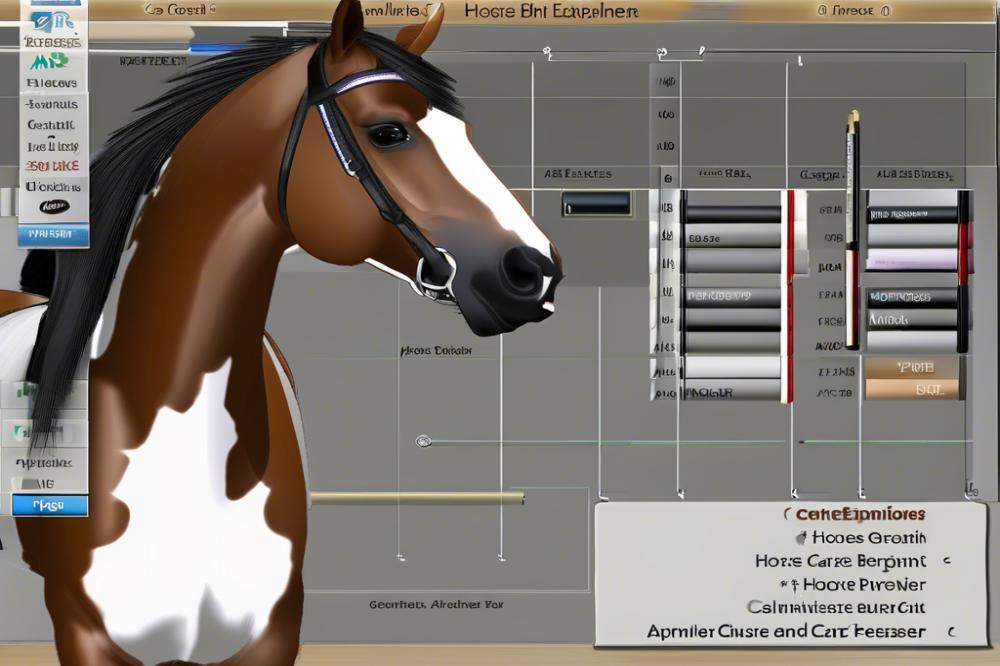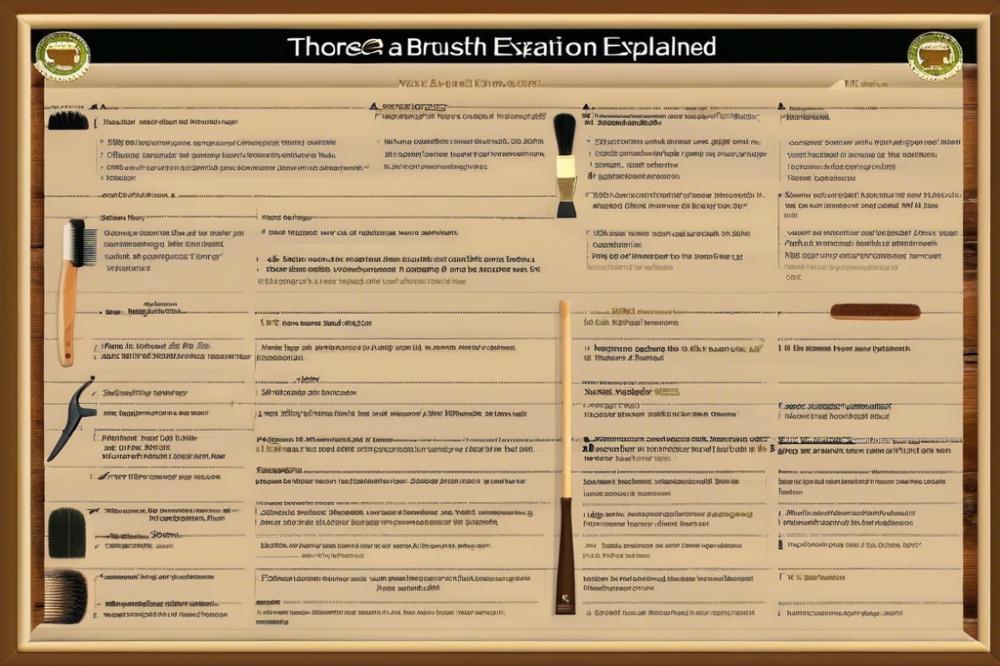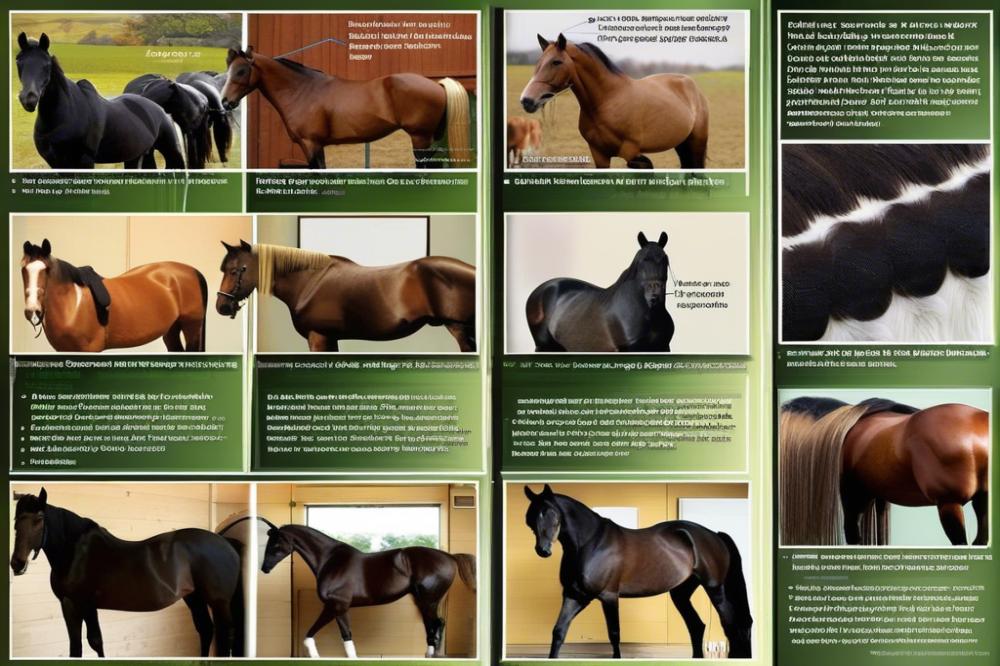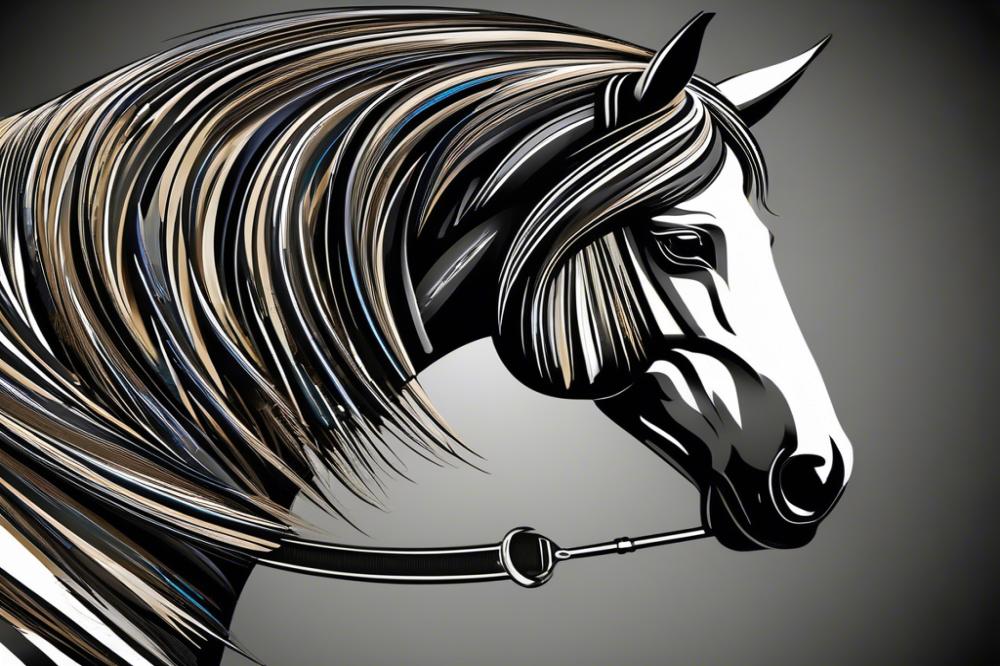Understanding the Importance of Horse Brushes
When it comes to horse care, grooming isn’t just a chore; it’s a bonding experience that can strengthen the connection between horse and rider. Imagine brushing your horse, feeling the warmth of their coat, hearing their contented snorts, and witnessing how they relax under your touch. Grooming plays a vital role in maintaining not just the physical health of a horse, but also their mental well-being.
Many people might wonder why we need a range of grooming tools. Each brush serves a different purpose, much like how a chef uses various utensils to whip up a meal. From removing dirt and dust to enhancing circulation in the horse’s skin, these tools are an essential part of equestrian techniques. Plus, let’s face it, no one wants to present a dirty horse at a competition. So, whether you’re tackling a hefty morning schedule or prepping for a big ride, understanding how to groom properly can make all the difference.
What to Expect from This Article
This article will dive deep into the world of grooming. It will explain the various brushes available and how they can influence horse health. You’ll learn the nuances of each tool—those unique bristles that make all the difference and the techniques that can turn a simple grooming session into an enjoyable ritual.
Rest assured, this won’t be a dry, dusty read. Funny stories and silly quips will be included along the way. Take, for instance, that time when I accidentally used a hoof pick instead of a curry comb. Spoiler alert: it didn’t end well for my horse or my dignity!
So sit back, grab a cup of tea, and join us on this grooming adventure. Anyone who’s ever asked, “Can a horse live with 3 legs?” surely understands the importance of taking care of our wonderful equine friends. Together, we’ll explore everything you need to know, including fun facts like the surprising black forest horse size and how that relates to grooming needs. Let’s get started!
Types of Horse Brushes

Understanding the different types of brushes used in horse care can feel like stepping into a whole new world of grooming tools. Each brush serves a specific purpose, and knowing when to use them makes all the difference. You wouldn’t scrub pots with a feather duster, right? The same logic applies here!
Body Brushes
Body brushes are essential for removing dirt and loose hair. They typically have soft bristles, which can feel like a gentle massage for your horse. Many horses actually enjoy this part of grooming. You’ll notice their eyes half-closing as you sweep the brush across their coat. Using a body brush regularly helps maintain a healthy shine and promotes good blood circulation.
Curry Combs
Curry combs are often the first step in grooming. Think of them as the warrior against dust and mud! These brushes are usually rubber or plastic, featuring small, nubby teeth. They are designed to loosen dirt and hair, making it easier to clean your horse. Use circular motions when applying this tool to get into those tricky spots, like behind the ears or along the back.
Hoof Brushes
When it comes to hoof care, hoof brushes play a starring role. They are sturdy and usually come with firmer bristles. Cleaning a horse’s hooves is crucial for their health. A careful brush ensures that dirt and stones don’t turn into problems. Plus, your horse will thank you by standing still, which is quite a feat! It’s a good idea to make hoof cleaning a part of your regular grooming routine.
Mane and Tail Brushes
No one wants a tangle in the tail, much like a bad hair day! Mane and tail brushes are made to gently detangle those flowing locks. They typically have wider bristles to prevent pulling and breakage. Start from the bottom and work your way up to keep things smooth and easy. Your horse will look stunning with a well-combed tail, and you can show off those stunning equestrian techniques!
Finishing Brushes
Finishing brushes come into play after all the heavy lifting is done. They are the cherry on top of a perfect grooming session. With these, you can give that final polish to your horse’s coat. Their soft bristles help remove any remaining dust and hair while giving the coat a nice shine. Think of them as the final flourish before you head out for a ride!
Knowing when and where to use each type makes grooming not just effective but enjoyable. The right tools can lead to better horse health overall. Plus, grooming time is a great bonding experience between horse and rider. A little humor often lightens the mood. So, don’t hesitate to share a joke or two while you brush away! You’re not just caring for their coat; you’re also making memories.
Materials Used in Horse Brushes

Common Materials Used in Horse Brush Manufacturing
When it comes to equestrian equipment, materials make a world of difference. Brushes often feature either natural fibers or synthetic materials, each with its own benefits. Natural fibers like horsehair, bristle, and sisal have been favorites for generations. Many groomers appreciate the softness of horsehair. It glides smoothly over the animal’s coat, promoting shine and health. Bristle brushes, crafted from the hair of pigs or goats, offer sturdiness. Their stiff texture helps dislodge dirt and debris effectively.
On the flip side, synthetic materials are gaining popularity. Plastic bristles tend to be durable and resilient. They can withstand frequent use without fraying. Some products even incorporate rubber, which adds flexibility and a unique feel while brushing. Grooming tools like these are often easier to clean, making horse care simpler for busy owners.
Comparison of Natural Fibers Versus Synthetic Materials and Their Effects on Grooming
Now, let’s dive deeper into the natural versus synthetic debate. Many owners swear by natural fibers as the gold standard for horse grooming. These materials generally provide a gentler touch. Using them can contribute to better horse health. A softer brush might feel nice and produce a shinier coat. These fibers are also biodegradable, which is a bonus for eco-conscious equestrians.
Still, synthetic brushes are not to be overlooked. Their ability to retain shape often impresses groomers. For more rugged grooming sessions, these materials can excel. You won’t stress about wear and tear after a rainy day spent outside. Plus, synthetic brushes often come with colorful designs. You might even find one that matches your barn’s vibe!
So, what should you choose? It boils down to personal preference and your horse’s specific needs. Some horse owners prefer a mix of both types to maximize their grooming arsenal. Switching textures can keep your horse engaged and make the routine more interesting. After all, everyone enjoys a little variety, don’t they?
When considering the right brush, think about the feel and effects on your horse. Grooming isn’t just about keeping them clean; it’s also a way to bond. Remember, horses have their preferences too. Listen closely, and you might find out what works best during your sessions. Choosing the right materials ultimately makes the difference in grooming effectiveness, ensuring a happy horse and satisfied groomer alike.
How to Choose the Right Horse Brush

Selecting the right grooming tools is key to effective horse care. Consider your horse’s breed first. A thoroughbred might need a different approach than, say, a shaggy Shetland pony. Each variety has unique coat types, and selecting a brush that suits their needs can make a world of difference. Did you know that some ponies love being brushed while others are more sensitive? It’ll help if you keep their personality in mind when choosing equipment.
Factors to Consider When Selecting Horse Brushes
Different brushes serve different purposes. For example, a stiff bristle brush is great for removing dirt from a horse’s coat, while a softer brush is perfect for a finishing touch. If your equine friend has a thick winter coat, a metal curry comb can work wonders. Think about the season too. In warmer months, using lighter grooming tools may keep your horse comfortable.
Don’t forget the handle! A brush that feels good in your hand makes grooming enjoyable. Ergonomic grips can reduce strain during those long brushing sessions. Have you ever used a brush that slipped out of your hands? It’s annoying! Your horse will appreciate a comfortable grooming experience just as much as you do; they benefit from proper horse health too.
Tips for Different Breeds, Coat Types, and Grooming Needs
When it comes to grooming, what works for one breed might not work for another. Quarter horses often have short coats, so a rubber curry can be effective for massaging their skin while removing loose hair. On the other hand, a long-haired breed like the Friesian may require a slicker brush to detangle before washing. Who wants a matted mane, right?
Certain tools can help with specific grooming tasks. In addition to your standard brushes, consider investing in a hoof pick as part of your equestrian equipment. Keeping your horse’s feet in shape promotes overall health and well-being. Plus, those muddy hooves are a real hassle to deal with after a good ride!
Finally, remember that patience is key. If your horse gets fidgety, take breaks. No need to rush! Talking softly or treating them to a snack can help ease any nervousness. Enjoy the bonding time. After all, horse grooming is not just about the brushes. It’s also about creating that special connection.
Proper Use of Horse Brushes
Step-by-Step Guide to Using Grooming Tools
Grooming a horse is like cooking a fancy meal. Each tool serves a purpose, and timing matters. Start with the curry comb. This tool loosens dirt and hair. Use it in a circular motion, starting at the neck and moving toward the tail. Get into all the nooks and crannies, especially around the shoulders and hips. Horses will often enjoy this; it feels like a nice massage.
Next, pick up the stiff-bristled brush. Remember to use it in the direction of hair growth. This action removes dirt and dust. It’s best to go lightly near sensitive areas like the face and belly. A few strokes here and there can make your horse feel fabulous.
Switch to the soft brush afterward. This one is perfect for the finishing touches. Use it gently to sweep away any remaining dust. It’s especially great for sensitive areas as it feels softer on their skin. You want your horse to look its best, right? Don’t forget the legs; they’re important too!
The hoof pick is an essential part of horse care. Check the hooves for stones or debris. A clean hoof is vital for overall horse health. While checking, look for signs of thrush or any other issues. Catching problems early makes all the difference.
The mane and tail require special attention. Find a good detangler and a wide-toothed comb. Start at the ends and work your way up. This technique prevents breakage. It’s like untangling a messy necklace; patience is key!
Common Grooming Techniques and Practices
Consistency is important in horse grooming. Make it a routine. Not only does it create a positive bond, but it also helps in monitoring your horse’s health. Changes in their coat or behavior can tell you a lot. You might notice something off, like a sudden change in temperament. Paying attention during grooming can alert you to underlying issues.
Use grooming as a time to bond. Talk to your horse while brushing. They love the sound of your voice, even if they won’t admit it. Sharing stories, jokes, or even singing can lighten the mood. Think of it as sharing a moment with a friend.
Remember to start with clean tools. Dusty brushes can turn grooming into a messy process. It’s like trying to paint with a dirty brush. Keep your equestrian equipment organized and ready to go. A clean stable keeps your horse happy.
Practice good body language too. Stand to the side, allowing the horse to see you clearly. Approach slowly, ensuring they feel safe. A relaxed horse will be more cooperative. Confidence is key in making grooming a pleasurable experience.
In the end, horse grooming is about care and connection. Proper brushing goes beyond looks; it promotes health. Whether you’re a seasoned rider or a beginner, mastering these equestrian techniques can make you both feel great. Enjoy the process, and remember: your horse appreciates your effort more than you might think!
Maintenance and Care of Horse Brushes
Cleaning your grooming tools is super important. Think of it like brushing your teeth. If you don’t do it regularly, things can get pretty grimy! So, how do you keep your brushes in tip-top shape? It’s easier than you might think.
Instructions on How to Clean and Maintain
First off, always remove the hair and debris after each use. Use a comb or your fingers to get rid of the leftover fur. Next, take a bucket and fill it with warm, soapy water. A gentle dish soap works wonders! Soak the brushes for a few minutes. Scrubbing gently with an old toothbrush can help loosen any stubborn dirt.
Rinse thoroughly. Leaving soap behind can make your brushes sticky and less effective. Allow them to air dry completely before putting them away. If your brushes have wooden handles, avoid soaking them too long. Wood can split and warp if exposed to too much moisture.
Importance of Keeping Tools in Good Condition
Taking care of your equestrian equipment helps maintain horse health. Clean brushes help prevent skin issues like fungal infections. Plus, using clean grooming tools makes for a better bonding experience with your horse. Who doesn’t love a good scratch behind the ears?!
Think about it. If you wouldn’t want to use dirty tools on your own hair, why would your horse feel any differently? Grooming is also a part of horse care that requires a bit of love and attention. Not only does it show you care, but it can also help in spot-checking for any health problems.
A little maintenance goes a long way! Keeping everything clean will prolong the life of your grooming tools. After all, nobody wants to fork out cash for new brushes when keeping the old ones clean is so simple. Your horse will appreciate the effort, and you can feel proud knowing you’re using the best techniques.
So, roll up those sleeves and get to it! Your brushes and your horse will thank you for the special treatment. Each stroke of the brush can be a bonding moment, and who doesn’t enjoy spending time with their four-legged friend?
Common Mistakes in Horse Grooming
When it comes to horse grooming, many owners make a few common blunders that can affect their horse’s well-being. It’s easy to overlook certain details, especially when you’re focused on keeping your equestrian equipment in top shape. You might think brushing is just a simple task, but it’s more nuanced than it appears.
Identifying Frequent Errors Horse Owners Make with Brushes
One mistake is using the wrong brush for the horse’s coat type. Not all horses have the same skin or hair. Some have sensitive skin, while others have thicker manes and tails that need a bit more toughness. Ignoring this can cause discomfort. Another error involves brushing too hard. If someone thinks their horse enjoys a rough scrub down, they might be mistaken. Gentle strokes are often what keep a horse calm and relaxed during grooming sessions.
It’s also common to neglect certain areas like the belly or under the tail. These spots can gather dirt and debris just like the rest of the body. If you skip them, your efforts might not be as effective. Also, many owners forget about cleaning their grooming tools. Dirty brushes can transfer dirt or bacteria back onto the horse. This isn’t great for horse health.
Tips for Avoiding These Mistakes to Improve Horse Care
Knowing the right brush for your horse is half the battle. Research the best grooming tools for your horse’s unique coat. Invest in at least two types of brushes: one for the body and another for the mane and tail. This can make a world of difference.
Brushing gently is key. Think of it like giving your horse a soothing massage rather than a scrub. Try to use long, slow strokes, especially on sensitive areas. Your horse will appreciate this more than a vigorous scrub!
Don’t forget to give special attention to hard-to-reach areas. You can start to form a routine for checking these spots. This makes grooming predictable for your horse, and they may even look forward to the process. Cleaning your brushes regularly is another step you shouldn’t skip. A quick rinse and dry can keep them in shape. Your horse deserves the best of care, after all!
Lastly, remember that grooming time is not just maintenance; it’s bonding time. Chat with your horse, or play some soft music while you work. This personal connection helps build trust. So next time you grab your equestrian equipment, keep these tips in mind to improve your horse grooming routine.
Wrapping It All Up!
When it comes to grooming, understanding the variety of brushes available is pretty important. Each type has its own purpose, whether it’s removing loose dirt, smoothing the coat, or giving a good shine. By using the right tools, you can keep your horse’s coat healthy and make sure they look their absolute best. Just think about it—when you’re running late for a party, do you grab an old t-shirt or do you pick the outfit that makes you shine? The same goes for your horse!
Proper grooming is not just about aesthetics. It’s about connection, care, and keeping your equine friend happy and healthy. Regular brushing distributes natural oils, which helps maintain a healthy coat and skin. Plus, it’s a great way to bond with your horse. Ever seen a horse eating watermelon? It’s not too different—the way they enjoy those juicy pieces shows pure joy, similar to how they feel during a good grooming session.
Choosing the right brush can feel a bit overwhelming at first, given all the options out there. From curries to body brushes, each one is a different tool in your grooming toolbox. Don’t hesitate to explore the unique combinations that work best for you and your trusty steed. And remember, grooming time doesn’t have to be boring! It can be a quirky little routine filled with laughter and gentle chatter. After all, who wouldn’t want to share a joke while getting their horse ready to gallop into the sunset?
In closing, the importance of proper brushing and grooming techniques cannot be overstated. When you take the time to care for your horse’s coat, you’re investing in their overall well-being. In a world where even the glue we use—does Elmer’s glue use horses?—must be mindful of every detail, why should grooming be any different? It all comes full circle; a happy, healthy horse means a happy rider. Now, grab your brush and make some magic happen!



